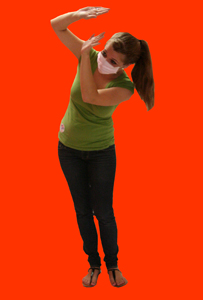By: JESSICA MCCOY
 Sneezing, coughing, fever, sore throat, achy muscles and vomiting are all signs that warrant a student needing to stay home from school. Yet for some reason a good number of students believe they are invincible and a little sickness should not interfere with their attendance and education.
Sneezing, coughing, fever, sore throat, achy muscles and vomiting are all signs that warrant a student needing to stay home from school. Yet for some reason a good number of students believe they are invincible and a little sickness should not interfere with their attendance and education.
It is understandable that someone would like to come to school so as to not fall behind. However, students are not being penalized for the days they are sick. The 10-day rule, which states that if a student has 10 or more days of unexcussed absences he must make a C or higher on his exam in order to pass the class for that semester, does not count for sick days excused by a doctor’s note. As long as the requested doctor’s note is provided he or she will not be marked as unexcussed.
Also, students get one day for every day absent while sick to turn in make-up work. Therefore, staying home from school due to illness dose not
cause one to fall behind academically and should not be used as an excuse.
When someone comes to school sick he or she is not in the right frame of mind to complete schoolwork, nor learn what is being taught that day. It is impossible for students to perform to the best of their ability when the sneezing, coughing and runny nose is causing a distraction from the assigned schoolwork. It is difficult to concentrate on calculus, English and world history when one’s body is concerned with its own well-being.
Sickly students will have trouble concentrating and performing to the best of their ability and they pose a threat to others in the form of a distraction. Peers will not be able to concentrate on their own work. Ill students pose as a distraction when they are coughing up a lung or constantly getting up to get a tissue and reach for the hand sanitizer.
The longer people ignore their sickness and force themselves to worry about schoolwork, the longer it will take for their bodies to recuperate and heal. Instead of being at school, students should be at home resting to get well more quickly.
When someone comes to school sick, he is running the risk of infecting not only all of his peers, but also teachers and other school officials.
According to Flu.gov, the main way influenza viruses spread is from person to person in respiratory droplets of coughs and sneezes. The sinus pressure and fever may not bother the initially ill student, but it is bound to upset those who become infected. The Center for Disease Control has an estimated number of 36,000 annual deaths are associated with seasonal influenza. An exact number is not available because states are not required to report individual seasonal flu cases or deaths of people older than 18 years of age to CDC.
One of OCPS’ five goals is to have a “safe learning and working environment.” Other students should not be forced to come to school in fear of being infected by their classmates. Students should come to school with their backpacks full of notebooks, pens and pencils, not tissues, hand sanitizer and medical masks.
Schools can be considered a hotbed for illness and bacteria and are a place where thousands of people touch the same things. It is extremely likely that a sick student will infect at the very least one other person throughout the school day.
Sick students should heed this advice: stock up on tissues, heat up some chicken soup, take a nap and catch up on their Tivo recordings. Bottom line, sick students should enjoy the day off and take the time to get better.